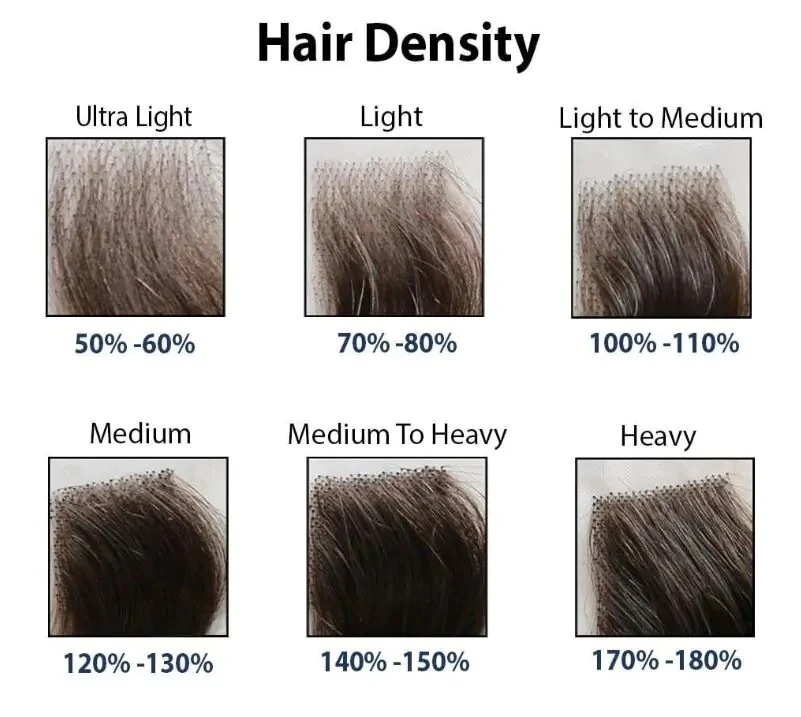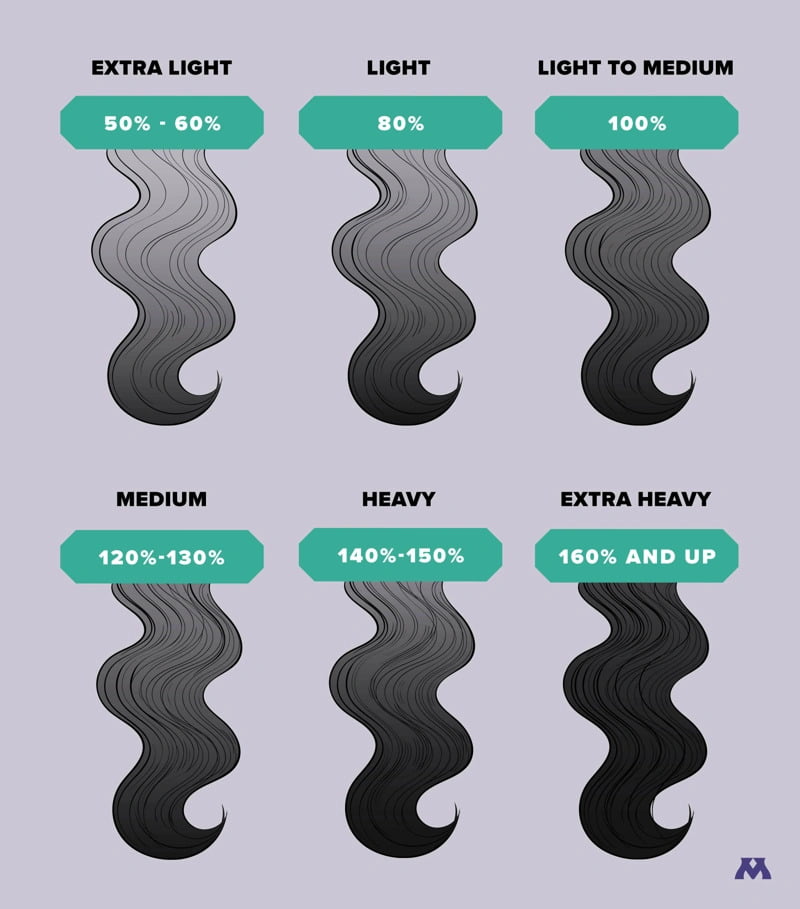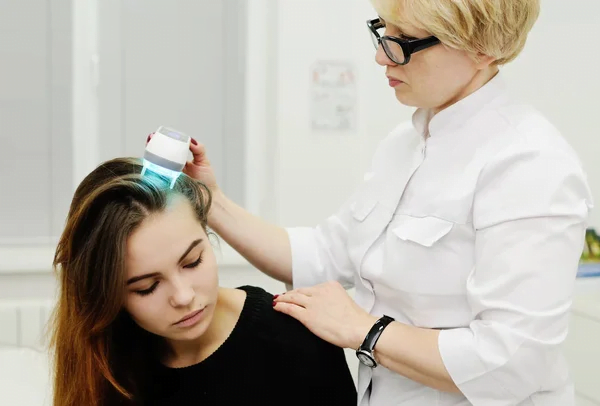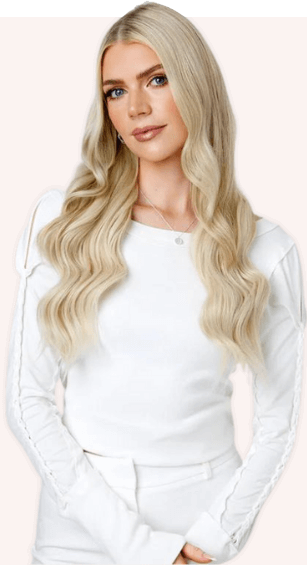You can categorize your hair in many ways — by its length, color, texture, coarseness, or density. Your hair density refers to how many strands of hair grow per square inch of your scalp. Hair density is one factor that determines how to best style your hair as well as the information about the strength and health of your hair. It also gives you information about how well you take care of your hair. It’s unnecessary to get out of a microscope and start counting individual strands. Just having a general idea about whether your density is on the thin or thick side can help you determine what type of hair products you should be using. Let’s review how you can figure out your hair density at home. We’ll also look at what types of cuts and products are most suitable for hair density. Because the more that you knew, the better your hair started to look!
I. Learning About Hair Density
Did you know that hair density does not only deal with hair extensions and wigs but also your real hair?
It tells a lot about the condition of your hair and how well you take care of it. There are some who cannot control their hair density, whether it is due to genetics or a medical condition. On the other hand, there are others who can try and retain their hair density by knowing what hairstyles and products work best. In terms of hair wigs and hair extensions, when you’re looking for a wig or hair extensions, you probably want to find the most natural-looking wig that complements your hairline and your face. Let’s chat about what exactly is hair density and how you can find out your own.
II. What is Hair Density?
It is not thick vs. thin hair. Hair density refers to how close your hair strands are to one another. To keep it simple, it refers to the number of individual hairs per square inch on your head (or scalp). Every single strand of hair adds to the overall thickness of your hair. Fun fact: on average we each have over 2,000 strands of hair within one square inch and typically have 80,000 to 120,000 on our scalp.
For hair wigs and extensions, density is expressed as a percentage that tells you how much hair is actually on but does not refer to the texture. The higher the density percentage, the fuller it will look; the lower the density percentage, the thinner it will look. Density percentages range from extra light (about 60%) to extra heavy (about 180%). However, do not get this confused with hair thickness. Hair thickness is different because it’s only about the width of the hair; not the quantity. If you have thick hair, you may in fact have highly dense hair, but someone with thin hair can have a ton of individual strands and have high hair density, too.
III. What's Typical Hair Density?
Hair density varies widely from person to person and can be quite different on natural, textured hair vs straight hair. It impacts the volume and shape of your hair as well. There’s no such thing as too high or too low, and your hair density isn’t indicative of your overall health.
1. Hair Density of Real Hair

There are three main types: low, medium, and high. Quite simply, low-density hair has fewer strands per square inch, high-density hair has a lot of strands per square inch, and medium-density hair is somewhere in between.
*Note*
- Low-density: You may want to avoid heavy products that weigh your hair down like heavy oils and conditioners. You could look for products that can add volume to your hair like volumizing shampoos, dry shampoo, and mousse. Hairstyles that add more volume to your hair can help give your hair a thicker appearance. Many stylists recommend sticking to cuts with blunt lines and minimizing layers.
- Medium-density: If your falls somewhere in the middle, you don’t need to do much to change the volume of your hair. You can focus on products that help keep your hair healthy while experimenting with different hairstyles and products.
- High-density: You may need heavier styling products to get your hair to stick and keep it under control. Serums and oils may help reduce frizz. Hairstyles that remove excess bulk may work best for you. Layering can help give your hair an illusion of being thinner, and many stylists recommend avoiding blunt cuts.
2. Density of Wigs and Extensions
To help people easily choose a wig, manufacturers tend to use general guidelines for wig density. Each manufacturer may have slight variations in density that depend on the type and quality of hair they use. The wig density chart is meant to be a reference to help you make an informed decision and feel good about your investment. As you search for the best human hair wig, keep in mind that units made from 100% virgin human hair will offer you the highest quality and be closest to matching the texture of natural hair.

- Extra Light Hair Density (50% to 60%): This density is considered the lightest and best for people whose natural hair is quite light in density. Some scalp may show but can still appear natural.
- Light Hair Density (80%): This is another great option for people with naturally thinner hair without a lot of volume. It’s a common choice for those whose hair has thinned out.
- Light to Medium Density (100%): This wig density is still on the lighter side but offers significantly more coverage than 80% or less. It’s a great option if you have naturally thin, fine hair.
- Medium Density(120% to 130%): Medium-density wigs are the closest to the density of natural human hair making them a very popular choice. It offers some volume, but not too much for a very realistic look.
- Heavy Density (140% to 150%): If you want a full look with plenty of volume, a heavy wig density is a great choice. It provides fullness without being overwhelming.
- Extra Heavy Density (160% and Higher): This is a very heavy wig density that is best for that celebrity look, or for performers who want the ultimate in fullness.
The most commonly chosen density is around 120%, which is considered medium to thick and more closely mimics the density of the average human head. Many units come pre-plucked, meaning they are less dense around the hairline and gradually get denser, giving the units a more natural appearance.
IV. How Do You Measure Hair Density?
Believe it or not, there are not that many ways to measure the density.
1. Strand Count
The most accurate – but least practical – way to measure is by counting the individual strands in a 1-inch by 1-inch section of your scalp. This method can take forever, but it is said to be the most effective. You are more than welcome to try this method on your own. However, I recommend that you see a professional hairstylist. A hairstylist can gauge your hair density the best because they can conduct the strand count more effectively.
2. Phototrichogram

Researchers commonly use an imaging technique called trichoscopy in lab settings to achieve this. A phototrichogram is a noninvasive method that takes a close-up photograph of your hair strands. The gold standard method of measuring is with a phototrichogram, an imaging technique that allows researchers to measure hair density and the growth phase of each individual hair. This method makes a qualitative and quantitative assessment of your hair. Phototrichograms do not take that long and are completed by trained hair professionals. This photo is just a faster more detailed option for a strand count.
3. Ponytail Test

The ponytail test is the simplest way to measure your hair’s density. The test works by putting your hair in a ponytail and measuring the circumference. This method does not take that long and is pretty simple to do yourself. To complete the ponytail test, just smooth out your hair anyplace into a ponytail. This method measures by the circumference of the end of your ponytail. So as you can imagine, the more hair you have, the more hair mass you will have. You can guess based on how thick your ponytail is and compare it to the following chart:

This test can give you a rough idea, but the thickness of each of your individual hairs also plays a role in determining the thickness of your ponytail. Of course, it also only works if you have hair long enough to put in a ponytail.
V. Conclusion
Knowing your density will help you make smarter choices, not only in the styles you wear, and the products you use but also helps to identify what type of hairstyles and haircuts are best suited for you. Understanding wig density is an important part of choosing a wig, but you also want to make sure you’re getting the best hair with the most longevity. And to do that, you want 100% virgin, human hair wigs, and bundles from AZ Hair. Operating in the hair business for decades, AZ Hair Vietnam is proud to be one of the most professional and reputable Vietnamese organizations in hair manufacturers and trading natural raw hair, virgin hair, and Asian human hair across the globe. We are proud to be the first Vietnamese hair company that has been verified by Alibaba


 BEST SELLING PRODUCTS
BEST SELLING PRODUCTS Wig Hair
Wig Hair WHOLESALE PRICE
WHOLESALE PRICE Contact us
Contact us Sale Event
Sale Event
